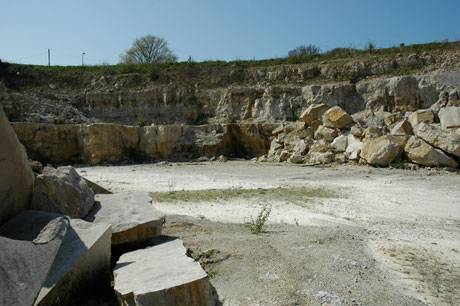
Research
Subject
Kleist and the space of collapse
First and second supervisors
Dr. Peg Rawes, Bartlett School of Architecture & Ms. Jayne Parker, Slade School of Fine Art
Abstract
This thesis starts with textual analysis of selected prose by Heinrich von Kleist (1777 – 1811) whose tormented transition between empirical and critical thinking was the foundation of his writing.
Kleist observed that an arch is only held in place because the stones that construct it want to collapse. Kleist’s seemingly empirical observation holds in it the seeds of its own philosophical, metaphorical and material destruction. I argue that this is architectural thinking. When Kleist read Kant’s critical writing the certainty of his understanding of the world collapsed.
The methodology for scrutinizing collapse materially and visually explores Portland as a site made by architecture’s uses. Portland is identified as a landscape that demonstrates Kleist’s vision of collapse. Recurrent landslips of the costal cliffs exposed the strata of Portland’s Jurassic limestone revealing its potential for architecture. Portland’s disrupted landscape is a built environment made from the voids left by quarrying. There has been little consideration of Portland by architectural history.
My investigation uses the time-based medium of moving image to show Portland as place and material inscribed by time.
Starting with analysis of architecture in Kleist’s story Das Erdbeben in Chile (1807) based on the earthquake that devastated Lisbon in 1755, I suggest that it is likely Kant’s earlier writing on natural phenomena had a bearing on the themes explored by Kleist, and that Kant’s earthquake essays should be regarded as empirical since they reveal his evolution from natural to critical philosopher.
Kleist’s later writings are identified as significant for modernist thinking and the construction of the modern subject. The idea of subjectivity as an architectural concept will be articulated through Kleist’s delineation of architecture as impinging on the characters and the tyranny of territorialized space as collapse.
The latter part of the thesis examines Kleist’s notion of collapse in relation to Blanchot’s theory of disaster. In considering Kleist’s observation that an arch stays in place because all stones want to collapse, I demonstrate a concept of collapse as architectural thinking.
Biography
Jane Madsen is an artist and writer working in moving image; her work includes experimental films, installation and documentary. She has an MA in Fine Art from Middlesex University and her current interdisciplinary research is a PhD in Architectural Design at the Bartlett School of Architecture with practice supervised by the Slade School of Fine Art.
She has taught at UAL in Fine Art, History and Theory. She has exhibited widely and written and published articles on film and art. In her film, video and installation practice the main themes are: home, place, territory and architecture/s.
 Close
Close

